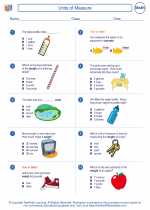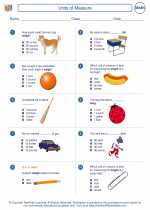Units of Measure -> arithmetic
Arithmetic
Arithmetic is the branch of mathematics that deals with the study of numbers and the basic operations performed on them. These operations include addition, subtraction, multiplication, and division.
Addition
Addition is the process of combining two or more numbers to find their total. For example, adding 3 and 4 gives the sum 7, which can be represented as 3 + 4 = 7.
Subtraction
Subtraction is the process of taking one number away from another. For example, subtracting 4 from 7 gives the difference 3, which can be represented as 7 - 4 = 3.
Multiplication
Multiplication is the process of repeated addition. It is used to find the total when a number is added to itself multiple times. For example, multiplying 3 by 4 gives the product 12, which can be represented as 3 * 4 = 12.
Division
Division is the process of splitting a number into equal parts. It is used to find out how many times one number is contained in another. For example, dividing 12 by 3 gives the quotient 4, which can be represented as 12 ÷ 3 = 4.
Order of Operations
When performing arithmetic operations involving multiple steps, it is important to follow the order of operations: Parentheses, Exponents, Multiplication and Division (from left to right), Addition and Subtraction (from left to right).
[Arithmetic] Related Worksheets and Study Guides:
.◂Math Worksheets and Study Guides Third Grade. Units of Measure

 Worksheet/Answer key
Worksheet/Answer key
 Worksheet/Answer key
Worksheet/Answer key
 Worksheet/Answer key
Worksheet/Answer key
 Worksheet/Answer key
Worksheet/Answer key
